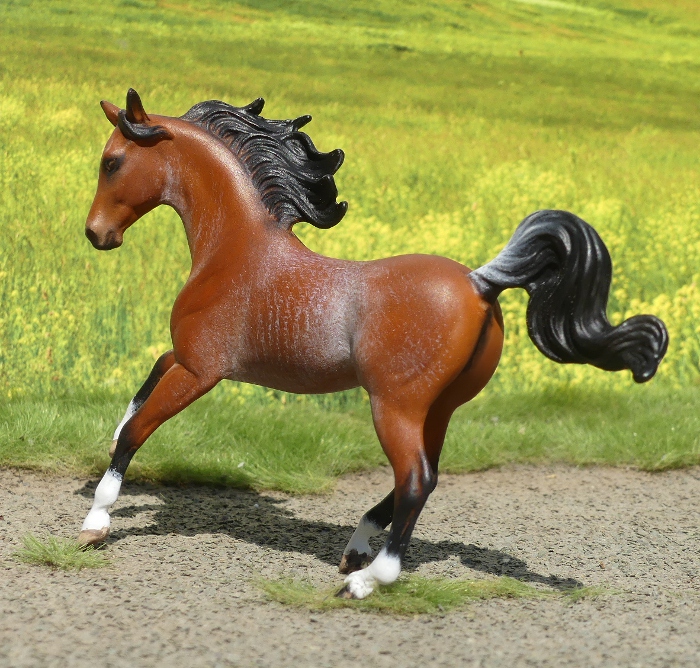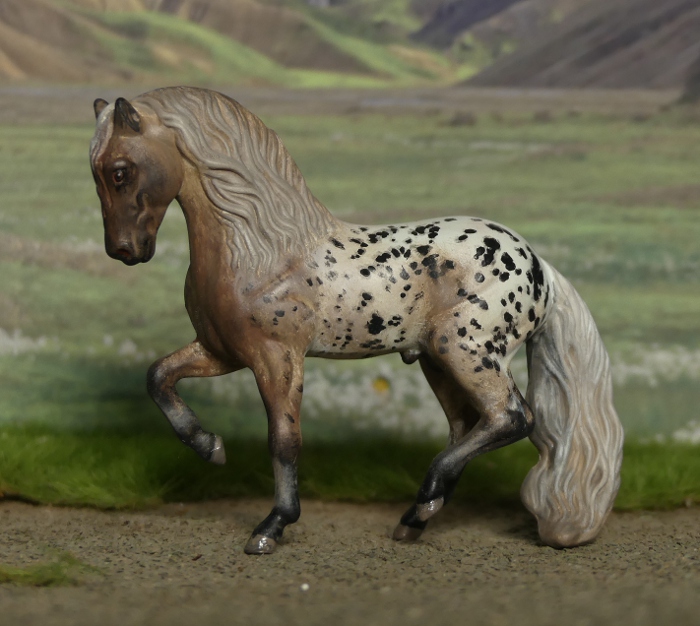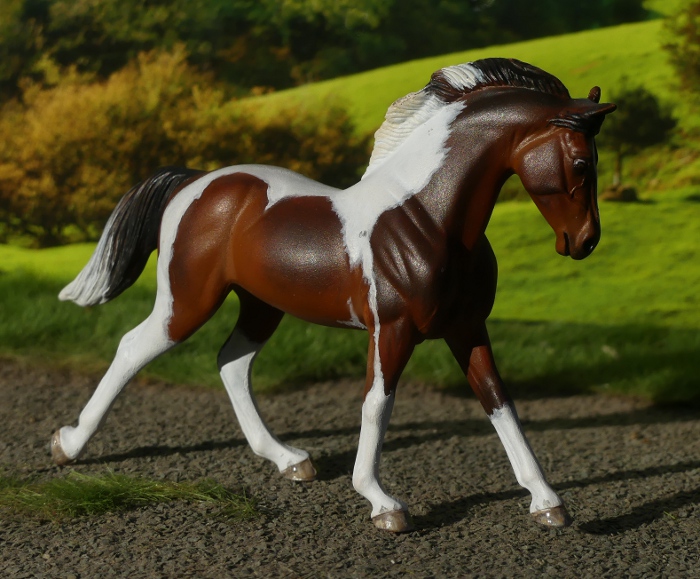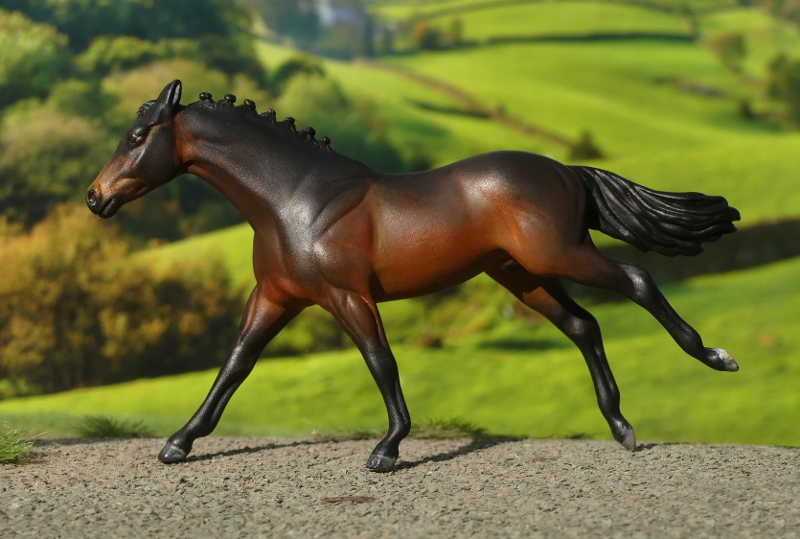A few new original finish additions this week, I have a little parcel of Breyers to introduce. Taking advantage of a 20% off offer from Chestnut Ridge, one of my favourite online sellers, I decided to go for a model I'd been dithering over for a while, some opened blind bag models, and finally (but not pictured here) a few unicorns to de-horn and paint up, because the moulds aren't available as normal horses yet.
Here's the first one, a Morgan in a simple but very effective bright bay colour.
I don't buy many at Classic scale (1:12), because I don't like all the moulds, and they do a lot of overly pearly or generally poorly designed colours in this range - and more often than not it happens that the good colours are on the moulds I'm not a fan of, and the bad colours spoil the sculpts I'd have happily owned otherwise! So when a mould I was keen to buy came out in a colour I liked, he went on my 'maybe' list...and then the special offer price made up my mind!
I like his flicked-back ear like he's paying attention toward the 'photographer' in pictures, it's a nice touch which gives him a little more life and realism.
He seems a pretty good rendition of his breed, with the typical compact, rounded body, deep neck, and handsome-looking head. Bay is also a very common colour for Morgans, and it's nice that they gave him nice bright highlights rather than flat plain brown, or the metallic reddish bay they use so often.
The rest of the parcel were Stablemates, here's the ones I'm keeping as they are - all three from the 2022 Mystery Horse blind bags, though I bought them already opened so I knew which horse I was getting. I'd have bought one of each to complete the set, but the others had sold out before I made my choices, so I just picked the best-painted example of each remaining horse.
This one's the Peruvian Paso mould, but I admit I'm not quite sure if they intend it to be chestnut or red dun! I assumed chestnut, in all the pictures it looks chestnut (the legs are no darker than the body, with is a bit too orange for a dun), but in person I discovered there's a dorsal stripe painted along the back in a darker shade of paint, so it's quite possible they mean it as a chestnut-based dun
A mould which looks good from either side, but I think I prefer the first picture with the gently windblown mane. I've given him the name El Ambajador.
The Loping Quarter Horse mould in chestnut, again a really typical colour for the breed and nicely done, with nice pale shading on the flanks, and just a hint of gold in the paint mix - this is when the metallic effect can work well, it's subtle enough to enhance the paintwork rather than making it look silly and plasticky, and on a horse breed which can have that subtle sheen on the coat in real life.
I've named her Rock And Roll, to match with my other solid chestnut QH mare, Cinnamon Roll. I do like picking themed or word-linking names for the breeds which do that in real life, it's kind of cheesy but quite fun!
The reiner in frame overo pinto, a neat combination really, as in this mould I've already got a solid coloured grulla and a frame overo chestnut, so if you take the base colour of one with the markings of the other, it's this result.
I wasn't too keen on this mould when it was first released, but I think that was just due to a lacklustre paintjob on the first one, as in good eyecatching colours like this it's just fine!
Hopefully at some point I'll be able to get hold of the other three blind bags from this series - there's a spotted dressage horse, the Valegro warmblood (which looks almost the same as the original Valegro portrait release, but perhaps in person they're a different shade of dark bay), and a gorgeous Icelandic which I really, really want!
If nobody else lists opened bags so I can choose my missing horses, I might just start buying a few unopened bags from wherever they're cheapest, as I wouldn't mind duplicates too much - more moulds for repainting is always a good thing!























































